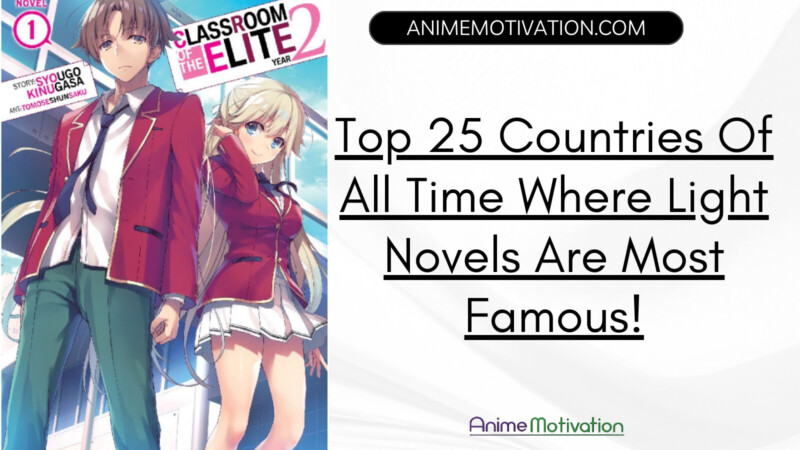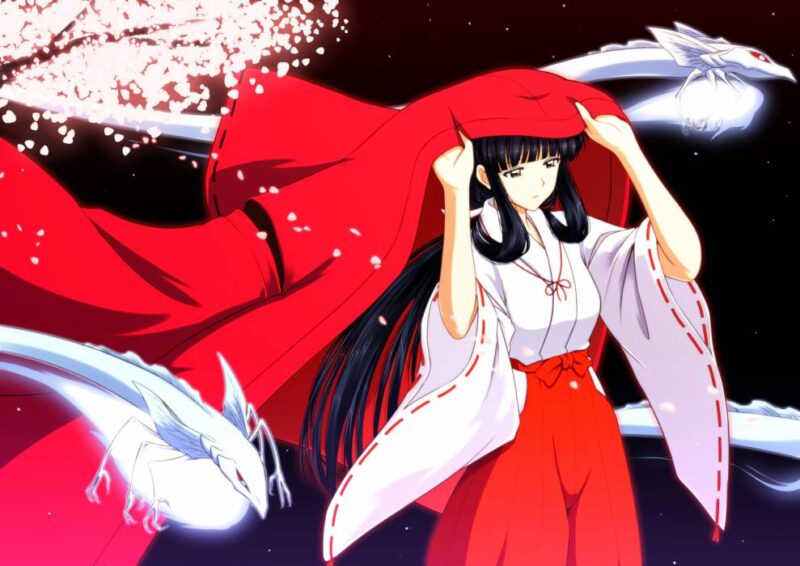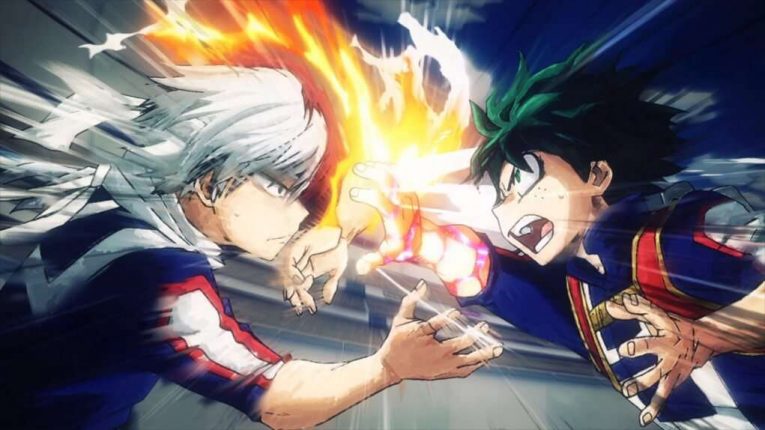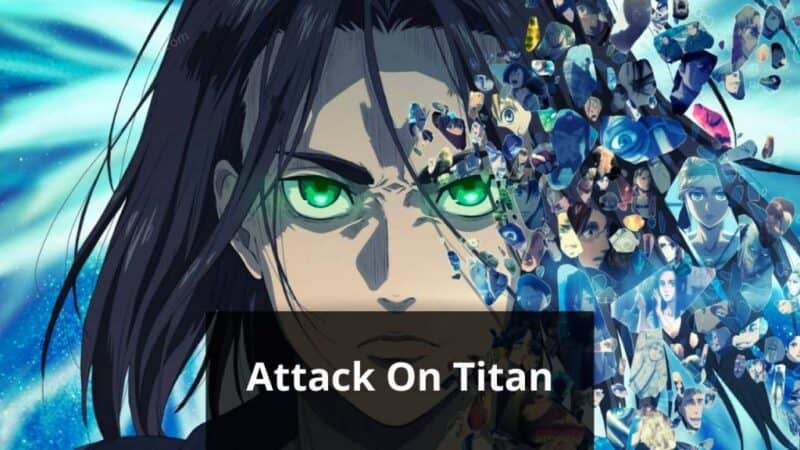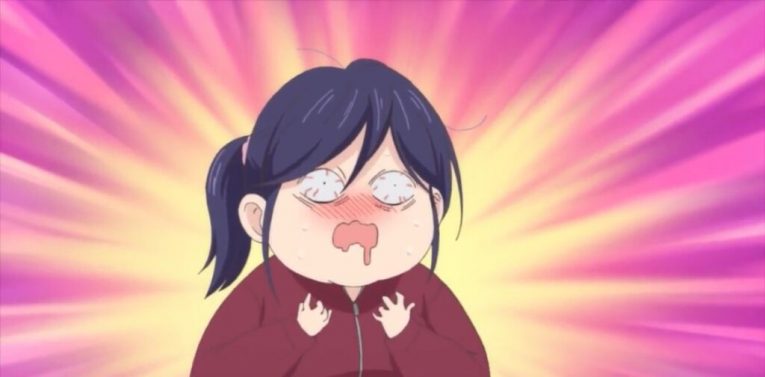Featured image courtesy of: Deviant Art.
How has the anime industry grown since 2004? That’s the question I’ll be answering today.
But why 2004? Why not 2001? Or 1999?
The answer is simple:
- Google Trends wasn’t around in 1999.
- Google Trends started collecting data on their users (and the internet) in 2004.
So that’s where the focus needs to be, as it can’t be helped.
One thing you’ll notice with the graphs in this post is: interest in anime has grown steadily over the years.
It hasn’t been steep. More incremental than anything else.
When you think about it, that reflects the anime industries growth pretty well. Because the industry has been up and down, raking in the cash one minute, and losing money the next minute.
How The Industry Has Grown, According to G Trends:
1. Anime (Topic) via Google
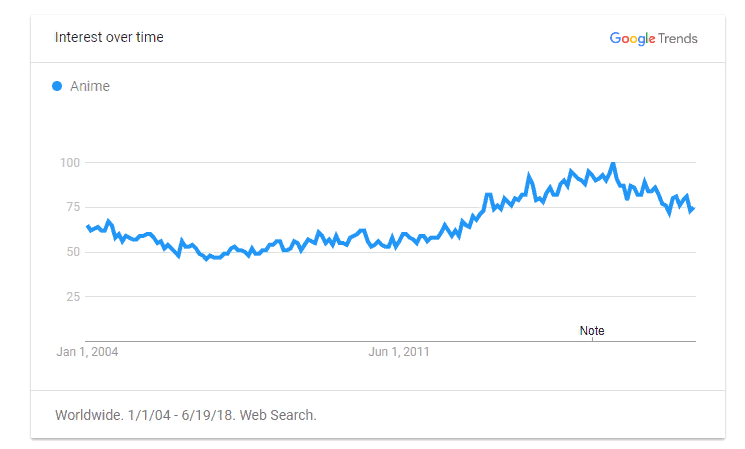
As you can see, this is a graph of the rise in anime interest since 2004. Keep in mind this data is worldwide.
Also: this trend is associated with the “topic” of anime, rather than the “search term” used on Google itself.
Around September 2012 the anime industry has been rising more and more according to the Google Trends graph.
Maybe shows like Psycho Pass,
2. Anime (search term) via Google

According to Internet Live Statistics:
“Google now processes over 40,000 search queries every second on average, which translates to over 3.5 billion searches per day and 1.2 trillion searches per year worldwide.”
So keep this in mind when looking at the graph.
Anime is “one” small part of these searches, but because of the volume of searches (100M for anime) this data is a good indicator of animes popularity online.
Strangely, the graph for anime as a search term isn’t consistent like anime as a topic in terms of growth since 2004.
My guess is: social media plays a role in these graphs.
After all, Facebook, Twitter, Quora, YouTube and Instagram have tons of anime fans using it. As well as MyAnimeList forums, Crunchyroll Forums, ANN forums and Aminoapps.
3. Anime (Topic) via YouTube

As you can see – YouTube’s graph looks different to Google’s graph.
There are two steep curves in the beginning years since 2008, and in the last few years as well.
On the whole, we can say anime (as a topic) has grown massively on YouTube. And the trends are even sharper than Google’s own search engine.
4. Anime (search term) via YouTube

In 2017-2018 there’s been a steep decline in people searching for anime on YouTube… At least in comparison to how many people search for anime on Google’s search engine.
We can expect this to rise again by the end of the year, otherwise it’s a bad sign. And I’d point the “bad sign” to copyright issues that are rampant across YouTube for anime videos.
5. Anime (Topic + search term) via Google News
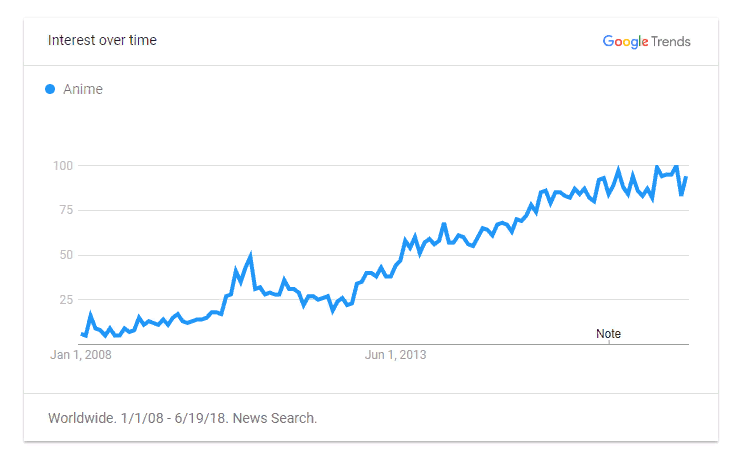
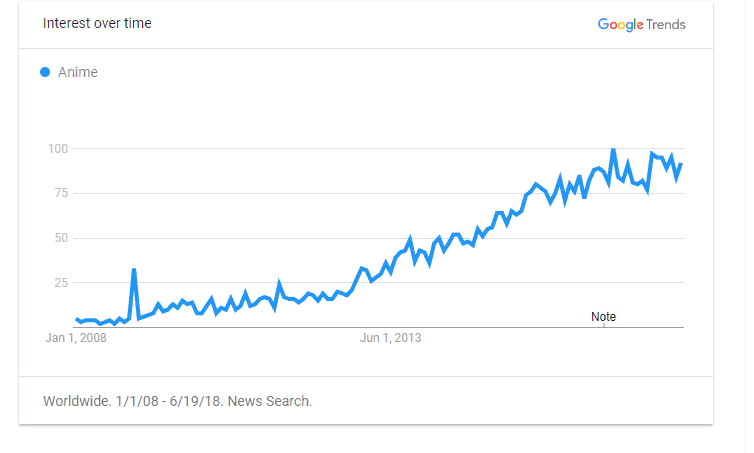
Of all the data on this list, Google News is the most surprising.
If you look at both graphs for anime as a topic and search term, there’s been a massive rise over the years. And it hasn’t dipped even once.
And when it has, it’s been minor. This is interesting because anime news is the bread and butter of the industry.
It’s how things get promoted, and it’s the reason so many bloggers and businesses are able to publish anime content, or sell anime
Based on this info alone, you can say the anime industry is on the rise (for news at least).
6. Anime (Topic + search) via Google Images
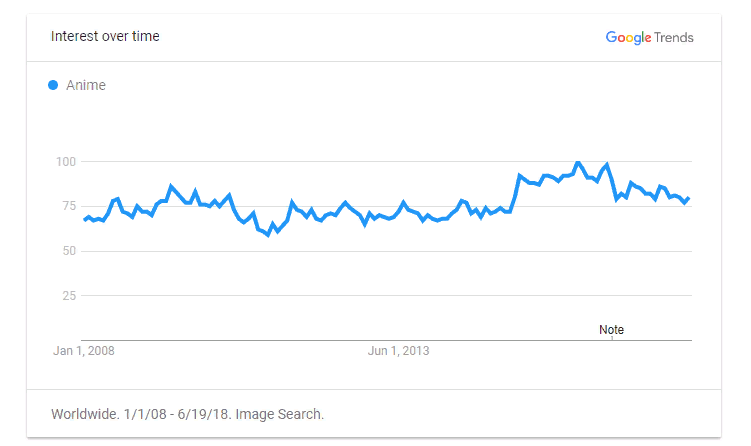
Google Trends started collecting data in 2008 for images, so that’s what the trends are based on.
It’s only slight, but the amount of fans searching for anime images has increased. And the topic of anime (related to images in general) has also grown, too.
Facts gathered from this anime data by Google Trends:
- In general, the anime industry has been growing incrementally. And this seems to reflect the industry in a lot of ways.
- Interest in anime has increased more in the last few years than any other time in history. According to Google, of course.
- Anime has had its up and downs, and still has more ground to cover. And more “successes” under its belt.
- anime “explodes” in a way it never has before. Assuming the trend keeps on growing.
How to use this data
Share it with friends who are also into anime. Or if you’re a part of the anime industry yourself, share it with professionals and start a discussion on the topic.
This data is not 100%, but it does paint an interesting picture of anime in general. And especially when it comes to the internet.
–
What do you think?
If you have something on your mind, leave it in the comments…
Related:
In January 2017 I Made 9 Predictions About The Anime Industry
Top 25 Countries Who Love Anime The Most, According To Google Trends




